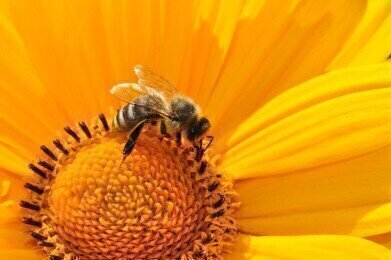Fuel for Thought
Biofuels vs. The Humble Bee
Jan 21 2016
Across the globe biofuels are widely hailed as a sustainable, eco-friendly alternative to their fossil counterparts. However, as they’re a relatively new source there simply hasn’t been time to determine the long term, knock on environmental effects of some biofuel types.
This issue was recently bought to the attention of American environmental scientists when they realised that wild bee numbers have been declining in many farming areas across the country. The results were part of a study conducted between 2008 and 2013, with their research indicating that over the past five years the number of wild bees has dropped by almost 25%.
Biofuel crops sting wild bee population
While there are other environmental factors at play the scientists are largely putting the colony collapses down to the fact that land across the US is being converted into corn crops. The corn is used to manufacture ethanol, an important component of biofuel. It’s even used in conventional fuels, with US law requiring a minimum 10% ethanol content in a bid to reduce greenhouse gas emissions. However as natural landscapes are ploughed in favour of corn crops, wild bee populations have suffered.
"The pattern we show is consistent with the expansion of corn for ethanol, the reduction of areas around fields that weren't cultivated before," explains senior author of the study, Prof Taylor Ricketts from the University of Vermont.
This goes hand in hand with broader agricultural concerns, as 39% of US croplands rely on pollinators. From an economic perspective wild bees also play an important role. It’s estimated that they contribute around US$3 billion to the value of the US agriculture industry every year.
US well aware of its colony collapse crisis
This isn’t the first time that the US has expressed concern over its bees, with President Obama issuing a memorandum in 2014 calling for an investigation into the state of honey and bees across America. He wasn’t unjust in his suspicions, as the latest results show a significant decline in a number of key agricultural regions including California, the Mississippi river valley, the Midwest and the Great Plains.
"If you look at the maps, the places that show the lowest abundance is essentially a map of intensified agriculture in the US," adds Ricketts. "That's a footprint of agriculture's effect on bees, and it’s a habitat loss thing and it's also a chemicals and pesticides thing for sure."
Want to know more about ethanol and its critical role in biofuel production? ‘Accurately Quantify Methanol and Ethanol in E85 Biofuel by D5501 with New Rtx®-DHA-150 Column’ looks at the importance of accurately measuring ethyl alcohol content, and the impact this has on fuel performance and influence sales price.
Digital Edition
PIN 25.4 Aug/Sept
September 2024
Analytical Instrumentation - Novel and Rapid LSC method for the analysis of biogenic carbon in fuels Measurement and Testing - Matrix evaluation on the Xplorer-V with Vectra autosampler accordi...
View all digital editions
Events
Sep 23 2024 New Orleans, LA, USA
Sep 23 2024 Rio de Janeiro, Brazil
Sep 24 2024 Kielce, Poland
Sep 24 2024 Calgary, Canada
IDW DOWNSTREAM CONFERENCE 2024
Sep 24 2024 Warsaw, Poland



















